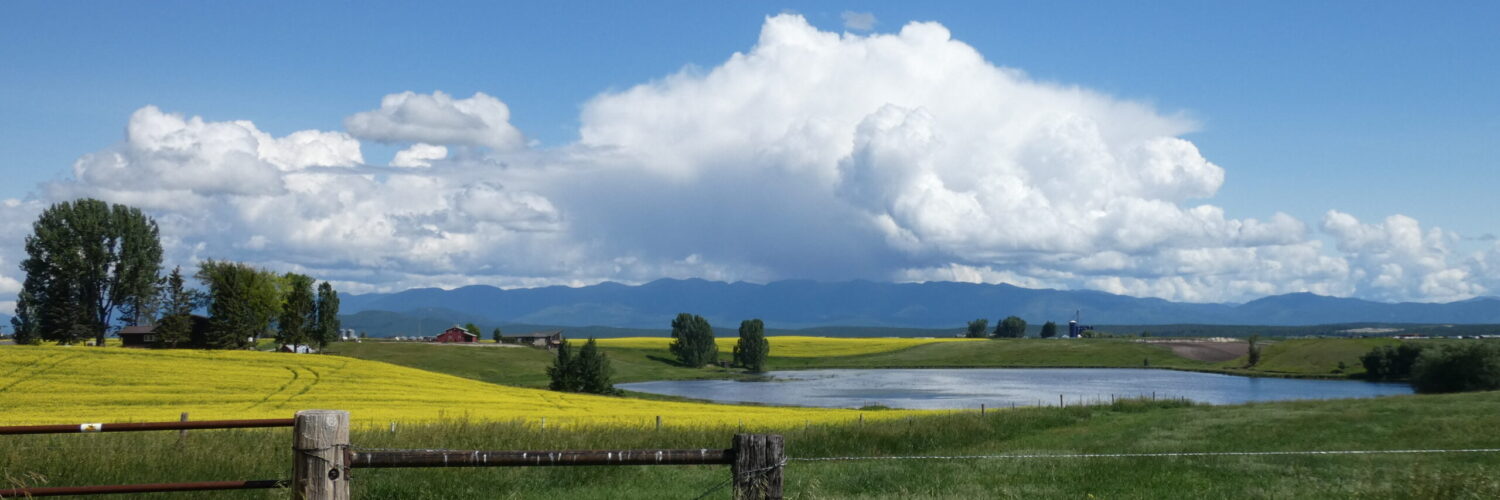by Pat Jaquith
pat@westvalleynaturalists.org

Members of the Orchidaceae (Orchid) family, there are several species of Coral roots that grow in our valley. In this article, I will introduce the ones I have seen.
All of our orchids flower, are pollinated by visiting insects, and produce seeds. Uniquely, the seeds in pods are “naked”, that is, they have no food supply to sustain germination or the beginning of growth. I had read that their seeds are called “Dust seeds”. Curious to see what a naked dust seed looks like, I opened a seed pod at home, over a piece of paper, and out fell a small pile of dust. 35X magnification made them large enough to see them separately, but really, their minute size is about the most impressive characteristic I could observe. I carefully slid the dust into an envelope and delivered it back to the forest where I had collected it.
More research: in the book Entangled Life by Merlin Sheldrake, he describes observing under a microscope the Mycorrhizal hyphae (50X finer than the finest roots) that had grown into the dust seed. As those fungal hairs grew, they “raveled into knots and coils”, swelling the seed and being digested, thus feeding it as it started to grow. All Orchids continue being fed by funguses for some period of their life. Peter Lesica, in Manual of Montana Vascular Plants, writes that “The sole source of nutrition ((for Coral roots)) is soil-inhabiting fungi that invade the coral-like rhizome (root-like structure) and are digested.”
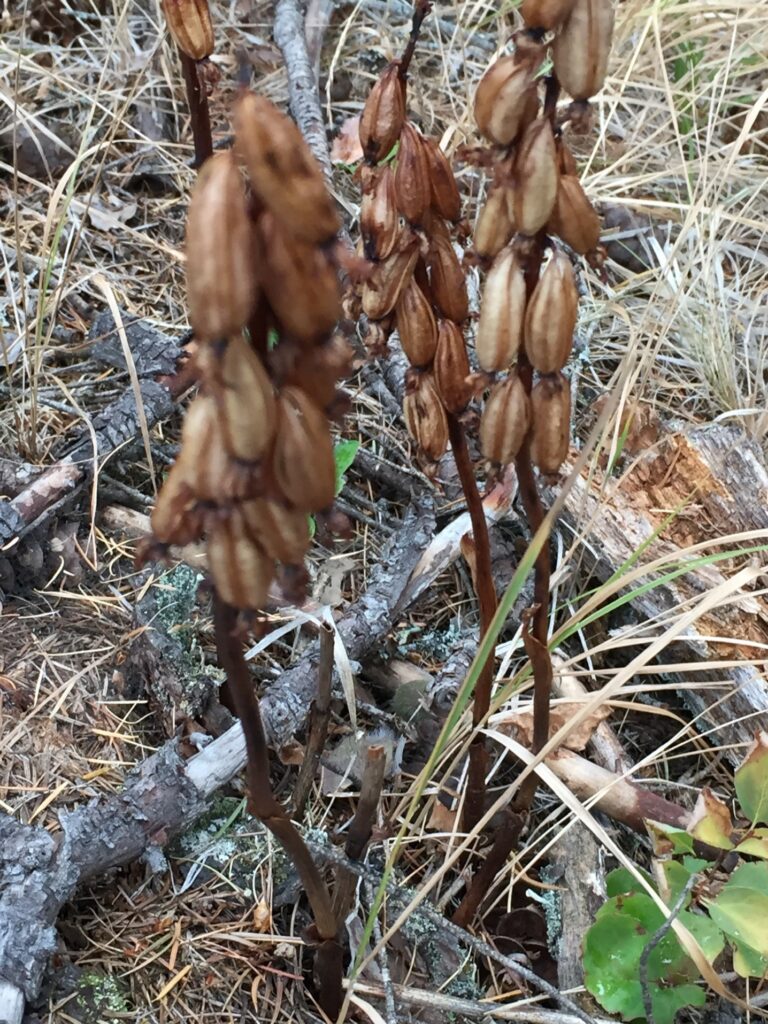

Spotted Coral roots aren’t all “spotted”. There is one variant that is unspotted and has paler coloration of other vegetative parts. All of the Spotted coral roots parasitize root rot fungus. (See also Spotted Coralroot Orchid on this site.)

Easily confused with the unspotted Spotted coralroot, this one has pale vegetation and is often much smaller.
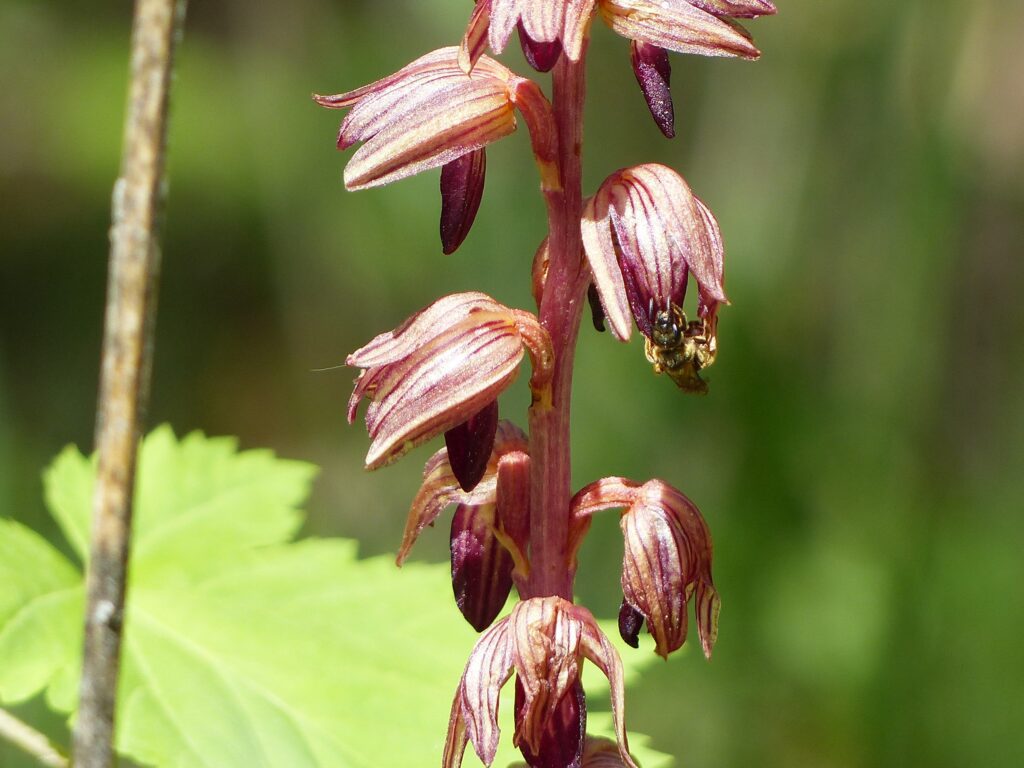
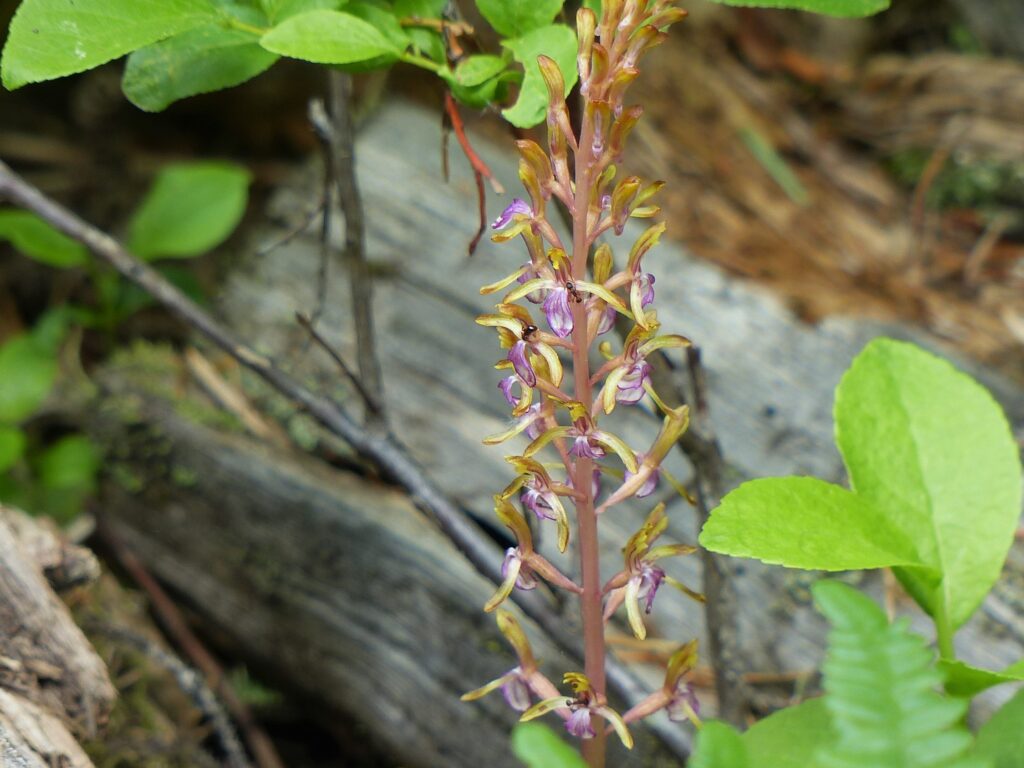
Lavender-purple stems, yellow and purple floral parts set these apart
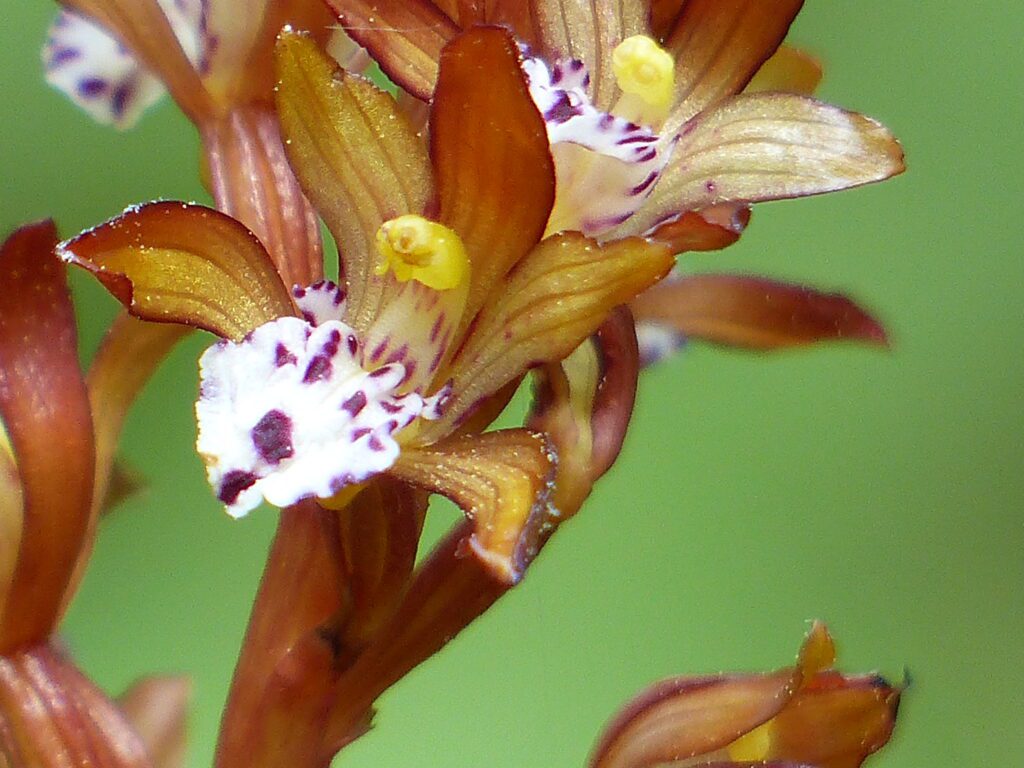
Our Coral roots grow in moist forest land and bloom in May and June. Most are between 8 and 15 inches tall, with each bloom about the size of a dime . I always feel well rewarded for getting down to their level – maybe with a hand lens – to get a good look at those delicate blossoms. Orchids, with their dust seeds, often need to grow 10 years before producing blossoms. Imagine all the perils they face in 10 years! I always marvel at my good fortune to see them. Picking them is NOT recommended. Enjoy them where they are; take a picture, or store that memory, and leave them to grow and continue to adorn our forests!
